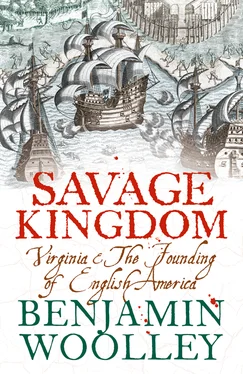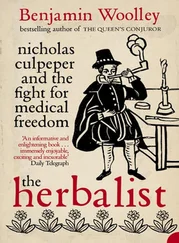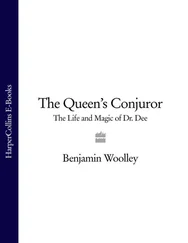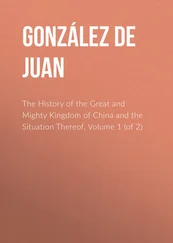
Virginia and the Founding
of English America

Cover
Title Page SAVAGE KINGDOM Virginia and the Founding of English America
Part One Part One
1 A Feast of Flowers and Blood
2 Machiavelli
3 The Adventurers
4 Departure
Part Two
5 Tsenacomoco
6 Soundings
7 The Spanish Ambassador
8 Bloody Flux
9 True Relations
10 The Virginian Sea
Part Three
11 El Dorado
12 The Mermaid
13 Promised Land
14 The Astrologer
15 Devil’s Island
16 Deliverance
Part Four
17 A Pallid Anonymous Creature
18 Strange Fish
19 The Good Husband
20 Twelfth Night
Part Five
21 Imbangala
22 The Treasurer
23 The ‘Viperous Brood’
24 The Unmasked Face
Notes
Bibliography
Index
About the Author
Author’s Note
Copyright
About the Publisher
Part One
ONE A Feast of Flowers and Blood
ON THE MORNING of 20 September 1565, the sixty-year-old carpenter Nicolas le Challeux awoke to the sound of rain pelting down on the palm-leaf thatch overhead. It had not stopped for days, and a muddy morass awaited him outside.
When he had arrived in Florida the previous month, a sunnier prospect had beckoned. He had left the terrors of his native France far behind, and come to a place where he could practise his craft and religion in peace. Its very name suggested renewal, the Spanish explorer Juan Ponce de León calling it Florida after the season in which he first sighted its shores: Easter Week, or Pascua Florida , ‘the feast of flowers’.
Florida could furnish all that a man could wish on earth, Challeux had been told. It had received a particular favour from heaven, suffering neither the snow nor raw frost of the North, nor the drying, burning heat of the South. The soil was so fertile, the forest so full of wild animals, the honest and gentle natives could live off the land without having to cultivate it. There were even reports of unicorns, and of veins of gold in a great mountain range to the north called the ‘Appalatcy’. It was ‘impossible that a man could not find there great pleasure and delight,’ Challeux was assured. 1
The contrast with the state of his homeland was stark. Europe was in turmoil. To the south, the Catholic Spanish and Holy Roman empires, offshoots of a single dynasty, domineered. In the north, Queen Elizabeth reigned over Europe’s upstart Protestant monarchy England, while her subjects egged on their co-religionists in the Low Countries (modern Netherlands and Belgium), who were fighting for independence from their Spanish overlords. To the east stretched the Islamic Ottoman Empire, Suleiman the Magnificent resting an elbow upon the Balkans, a heel upon Basra. And in the middle lay France, a Catholic country penetrated by a powerful Protestant or ‘Huguenot’ minority. Exposed to so many religious and political tensions, it threatened to disintegrate, and in 1562, a series of civil wars erupted across the kingdom that were so brutal, they gave the word massacre , French for a butcher’s block, its modern meaning.
It was from the midst of this maelstrom that Gaspard de Coligny, leader of the Huguenots, had dispatched a fleet under the command of his kinsman René de Laudonnière to found a Protestant refuge in Florida. To the eyes of Coligny’s Catholic enemies, this was a provocative move. Though its coastline was still only hazily charted, and some even doubted it was a single land mass, all of North America was claimed by the Spanish under a famous ‘bull’ or edict issued by Pope Alexander VI shortly after Christopher Columbus’s historic expedition of 1492. This had donated all the ‘remote and unknown mainlands and islands’ in the Atlantic to the Iberian kingdoms of Spain and Portugal, so they could bring the native populations ‘to the worship of our Redeemer and profession of the Catholic faith’. By sending his men to Florida, which was within convenient reach of Spanish possessions in Cuba and Mexico, Coligny was clearly challenging not only the Spanish claim, but the religious authority underpinning it. 2
However, Coligny’s exiles had found Florida untouched by the Spanish, and settled themselves on the banks of the River of May (now called St John’s River, near modern Jacksonville), on a ‘pleasant open space covered with various kinds of grasses and plants’. They called their new home Fort Caroline, after France’s Catholic King Charles IX, in the hope of forestalling reprisals. Old Challeux had arrived the following year with another consignment of refugees, on a supply ship captained by Jean Ribault, a prominent Huguenot, as well as one of France’s most accomplished seamen. 3
Conditions for the newcomers turned out to be less Elysian than advertised. The hundred or so settlers who had been there a year had run out of supplies, and were living off wild fruits, berries, the occasional crocodile, and goods stolen from the local Indians. There were also reports that the Spanish had been tipped off about Coligny’s project, and had sent a fleet which was even now roving the coast.
Over the coming weeks, Challeux joined a team of workmen who, under the direction of John de Hais, master carpenter, tried to reinforce La Caroline’s fragile palisade. The state of the fort’s defences was pitiful. The triangular layout was breached in two places, along the western side, and the long southerly wall facing the river, where the foundations for a ‘grange’ to store the settlement’s artillery and munitions lay partially built.
The weather hampered the workmen’s efforts. Daily deluges washed away the embankment supporting the palisade wall, and intervals of baking sunshine were too fleeting to allow the damage to be repaired. Meanwhile, the surrounding landscape became more and more saturated. Rivers burst their banks, meadows became marshland.
And so, on this September morning, Challeux faced another day of hard labour in the remorseless rain. Nevertheless, he managed to rouse himself, put on a damp and rotting cloak, and gather his tools.
A few hundred yards away, beyond the curtain of incessant rain, Don Pedro de Menéndez de Avilés lay in wait at the head of a column of five hundred soaking, disgruntled but well-armed Spanish troops. Menéndez was a Spanish noble and naval commander. He had arrived in Florida with a fleet of Spanish galleons a few days before Ribault, with orders to exterminate the ‘Lutherans’ and establish himself as Adelantado or governor of Florida, which King Philip II of Spain declared extended all the way from the keys on the southernmost tip of the Florida peninsula to Newfoundland. 4
Menéndez had anchored his ships in the River of Dolphins (modern Matanzas River), about thirty-five miles south of Fort Caroline. There, on 28 August, he had set about building a military base, which he called St Augustine, in honour of the feast day upon which construction work had begun. After several weeks gathering intelligence about Fort Caroline from local Indians, and harrying Ribault’s fleet, he decided to mount a land attack on the French settlement.
Читать дальше














